Arduino UNO Q bridges high-performance computing with real-time control.
Popular Development Boards for AI and Machine Learning
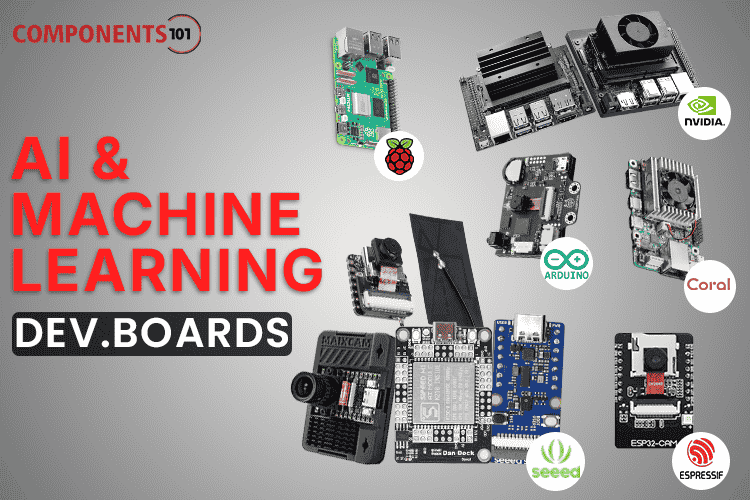
As AI and machine learning (ML) applications continue to grow, development boards have evolved to provide powerful platforms that simplify the integration of AI into various projects. Below is an overview of some popular AI and ML development boards, covering their key features and use cases.
ESP32-CAM
The ESP32-CAM is a low-cost, camera-equipped module that brings image recognition and machine learning capabilities to the ESP32 platform. It is one of the most affordable development boards suitable for AI and ML tasks. Its built-in OV2640 camera and microSD card support makes it an ideal choice for applications like facial recognition, image classification, and object detection. Apart from the default OV2640, the ESP32-CAM board supports the OV7670 camera module too. Along with that the camera also includes a user-controllable LED, which can be used as a crude flashlight if needed. The ESP32-CAM's affordability and Wi-Fi/Bluetooth capabilities make it a versatile option for DIY AI-powered IoT solutions. Its relatively low memory and processing power can be expanded using cloud-based AI inference systems, offloading heavy computations to remote servers. Even though this board is not that powerful when compared to other AI development boards in the market, the affordability
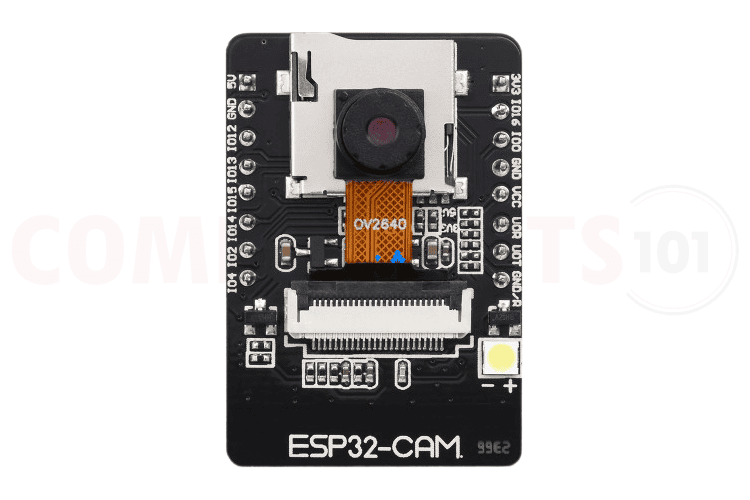
Key Features: ESP32 SoC, OV2640 & OV7670 camera, microSD support, Wi-Fi, Bluetooth
Use Cases: Facial recognition, IoT camera systems, image classification
Seeed Studio XIAO ESP32S3 Sense
The Seeed Studio XIAO ESP32S3 Sense is a compact development board designed for AI and ML applications, leveraging the dual-core ESP32-S3 processor. It includes onboard sensors like an IMU and microphone, supporting voice and gesture recognition out of the box. It also comes with an OV2640 camera sensor for visual inputs. With AI features enabled by the ESP32-S3's native vector instructions for ML, it allows developers to integrate AI directly into edge devices without relying on cloud processing. With more up-to-date dual-core XTensa LX7 and Bluetooth V5 support it is an upgrade over the normal ESP32-Cam boards. Apart from the upgraded hardware feature the small size of the board is also a plus point for the XIAO ESP32S3 Sense.

Key Features: ESP32-S3 SoC, onboard microphone, IMU sensor, Wi-Fi, Bluetooth
Use Cases: Voice recognition, gesture control, wearable AI
Arduino HUSKYLENS
The Arduino HUSKYLENS is a vision sensor module that brings AI-powered visual recognition to Arduino projects. Just like some of the other AI boards mentioned in this article, HUSKYLENS is also powered by the Kendryte K210 AI processor capable of performing tasks like face recognition, object tracking, and line following without requiring external computational resources. HUSKYLENS is designed to be highly user-friendly, making it accessible for beginners and educational purposes. What sets HUSKYLENS apart is its ability to "learn" objects and faces with a single click on the learning button, reducing the complexity of training models. It offers six built-in algorithms for Face Recognition, Object Tracking, Object Recognition, Line Tracking, Color Recognition and Tag Recognition, allowing developers to build AI applications without needing to dive deep into complex AI frameworks. Compatible with a wide range of Arduino boards, HUSKYLENS brings computer vision and machine learning to makers and hobbyists who want to explore AI within smaller-scale projects.
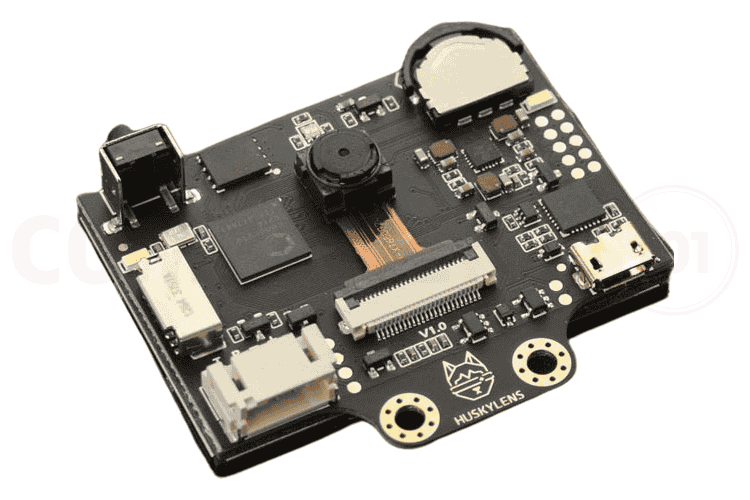
Key Features: Kendryte K210 AI processor, Integrated vision sensor, built-in AI algorithms (face recognition, object tracking, line following, etc.), Arduino-compatible
Use Cases: Educational AI projects, robotics, AI-assisted vision systems
Grove Vision AI Module V2
The Grove Vision AI Module V2 is designed for real-time image recognition tasks. It features an integrated camera and the Himax WE-I Plus AI processor, allowing for low-power, on-device image and gesture recognition. The powerhouse behind the Grove vision V2 module is the WiseEye2 HX6538 processor with a dual-core Arm Cortex-M55 and integrated Arm Ethos-U55 neural network unit. This module is compatible with Grove connectors, which makes it easy to integrate into existing projects. Its plug-and-play nature simplifies AI integration, particularly for vision-related tasks. The board supports easy deployment of off-the-shelf or your custom AI models from SenseCraft AI platform, including Mobilenet V1, V2, Efficientnet-lite, Yolo v5 & v8. It also supports TensorFlow and PyTorch frameworks too. On board, PDM microphone is useful for audio related projects.

Key Features: Himax WE-I Plus AI processor, built-in camera, PDM microphone, Grove connectors
Use Cases: Image recognition, gesture recognition, low-power AI applications
Sipeed M1W Dock
The Sipeed M1W Dock is a powerful development board designed for AI and machine learning applications, featuring a compact and efficient design. It is built around the K210 RISC-V dual-core processor, known for its AI capabilities, particularly in areas like image recognition and neural network processing. The M1W Dock supports wireless connectivity through Wi-Fi, making it ideal for IoT and edge computing projects. With its onboard camera interface and microphone, the board is well-suited for AI vision and audio processing tasks. The board also supports an external TFT display through the 8-bit MCU bus. Additionally, it offers easy development with support for MicroPython and C/C++, allowing developers to quickly prototype and deploy AI-driven solutions in embedded systems. The M1W Dock offers a balanced trade-off between performance and cost, making it suitable for entry-level AI projects. There are multiple AI compatible boards from Sipeed that feature the K210 RISC-V processor. Among them, the Miaxduino board is also a very popular and capable AI development board.
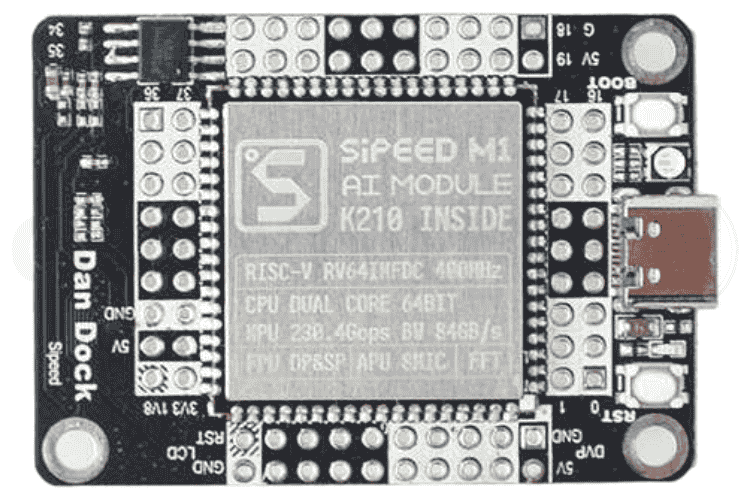
Key Features: Kendryte K210 AI processor, RISC-V dual-core, camera interface, Wi-Fi support, optional TFT Display support
Use Cases: Object detection, image classification, AI-enabled robotics
Sipeed MaixCam
MaixCAM is the latest AI development board from Sipeed, designed for better implementation of AI vision, auditory, and AIOT applications. The MaixCam is powered by a very powerful RISC-V dual core processor, with a 1GHz RISC-V C906 processor running Linux and a 700MHz RISC-V C906 core, running RTOS. There is also a 1GHz ARM A53 core available within the SoC for alternative use cases. Apart from these high-performance cores the processor also has an 8051 core for low power applications. It also features a dedicated NPU with the performance of upto 1TOPS, which supports AI models such as BF16, Mobilenetv2, YOLOv5, YOLOv8, etc. To pair up with the more powerful CPU the board features 256MB DDR3 memory along with 5MP MIPI camera, 2.4” high-definition IPS display, an onboard microphone, an onboard audio amplifier and WiFi 6 and BLE5.4 wireless connectivity support. Just like all other Sipped AI development boards the MaixCam also supports both C/C++ and Python frameworks. One another important feature of the MaixCam is the support for the Maix App store, from where you can easily download and install AI applications just like in a smartphone.
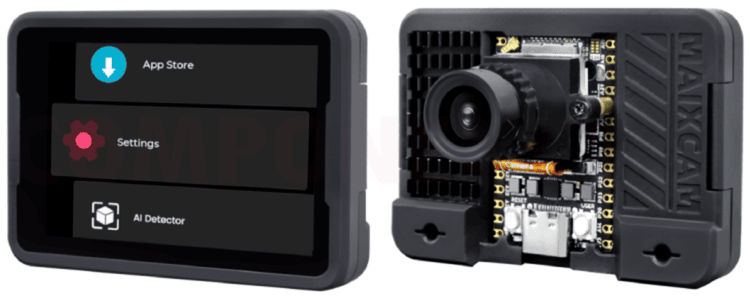
Key Features: Dual ISA SoC, 1TOPS NPU, built-in camera, real-time video processing
Use Cases: AI-powered cameras, real-time object recognition, robotics
Jetson Nano
The NVIDIA Jetson Nano is a compact, yet powerful development board designed specifically for AI and machine learning at the edge. It stands out for its ability to handle demanding computational tasks with a 128-core Maxwell GPU and a quad-core ARM Cortex-A57 processor. The Nano is particularly useful for developers looking to implement AI-driven systems in areas where energy consumption and physical space are constrained. The Jetson Nano's GPU delivers exceptional performance for processing parallel tasks like deep learning model inference, making it capable of running neural networks that involve image recognition, object detection, segmentation, and classification. Its compatibility with widely-used AI frameworks such as TensorFlow, PyTorch, and OpenCV allows developers to build and deploy their models seamlessly. The availability of extensive software libraries through NVIDIA’s JetPack SDK provides out-of-the-box support for accelerated computing, AI, and multimedia processing. The board features a variety of I/O interfaces, including GPIO, I2C, and UART, alongside more advanced peripherals like CSI camera connectors and MIPI support for high-quality image processing applications. Jetson Nano also offers the flexibility of interfacing with various sensors, cameras, and actuators, making it a solid platform for autonomous systems, AI-enabled robotics, and computer vision. Unlike all other AId development boards mentioned before, the Jetson Nano is far more advanced and capable of running full-fledged desktop linux distributions with some kernel mods.
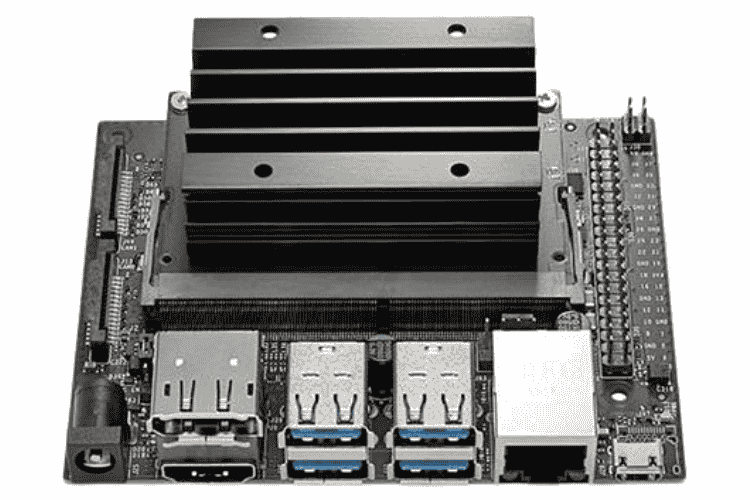
Key Features: 128-core Maxwell GPU, quad-core ARM Cortex-A57 CPU, 4GB LPDDR4 RAM, 472 GFLOPS AI processing, multiple I/O interfaces (USB, HDMI, MIPI, etc.)
Use Cases: Autonomous robots, AI-powered drones, smart security systems, industrial automation, and edge AI applications
Jetson Orin
The Jetson Orin is a much more advanced version of AI development board from NVIDIA, offering unparalleled computational power for demanding AI workloads. Built on NVIDIA’s Ampere architecture, the Orin platform features up to 2048 CUDA cores and 64 Tensor cores, enabling advanced parallel processing and real-time AI model inference. This performance advantage makes it suitable for complex AI applications like autonomous driving, robotics, smart cities, and industrial AI solutions. The Jetson Orin's architecture provides significant improvements in GPU acceleration and deep learning performance compared to its predecessors. With up to 32GB of memory and a powerful 12-core ARM Cortex-A78AE CPU, the Orin can run multiple AI models concurrently, process high-resolution sensor data, and manage real-time decision-making tasks. The Orin platform is also compatible with NVIDIA’s JetPack SDK, which includes accelerated libraries and tools for deep learning, computer vision, and data processing. Even though the Orin is more power hungrier than the Nano, thanks to its exceptional performance-to-power ratio, Jetson Orin is highly suited for embedded AI systems in autonomous machines, industrial robotics, and AIoT applications where real-time processing, reliability, and responsiveness are critical. Orin’s extensive support for high-bandwidth I/O interfaces, such as PCIe Gen4 and Ethernet, allows it to integrate seamlessly into sophisticated AI environments.
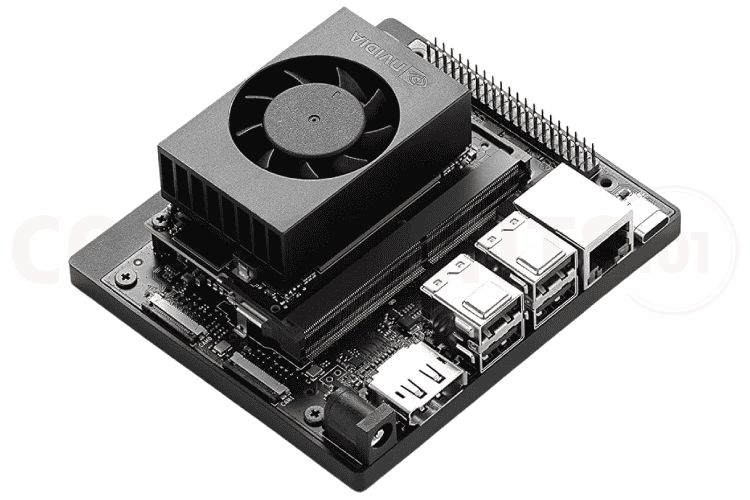
Key Features: NVIDIA Ampere GPU, up to 2048 CUDA cores, 64 Tensor cores, 32GB LPDDR5 RAM, 275 TOPS AI performance, Wireless Connectivity, Ethernet, HDMI and USB interfaces
Use Cases: Autonomous vehicles, advanced robotics, industrial automation, real-time AI systems
Raspberry Pi 5
The Raspberry Pi 5 is an upgrade from previous iterations of the Raspberry Pi, offering significant performance enhancements that make it more capable for handling AI and ML tasks. Powered by a quad-core ARM Cortex-A76 CPU, it provides higher processing power and better efficiency for running AI models and performing computational tasks. The Pi 5 is available with RAM configurations upto 8GB, giving it the memory bandwidth needed to handle more complex applications. Although the Raspberry Pi 5 lacks a dedicated AI coprocessor, it supports external hardware accelerators, such as the Google Coral USB Accelerator or Intel Movidius Neural Compute Stick, to offload AI model inference. The all-new Raspberry Pi AI Kit is an external AI accelerated kit designed specifically for the Raspberry Pi 5, featuring an AI neural network inference accelerator module built around the Hailo-8L chip offering upto 3 TOPS of performance. This modular approach allows developers to add AI capabilities without the need for extensive modification, making the Pi 5 a cost-effective option for experimentation with AI. Its robust ecosystem of GPIO pins, camera interfaces, and add-on hardware continues to make the Raspberry Pi 5 a flexible choice for AI and ML projects. Developers can implement various AI applications, including edge computing, computer vision, and data processing, by integrating the Pi 5 with suitable external accelerators. Furthermore, the greatest strength of the Raspberry Pi 5 is its huge community support.
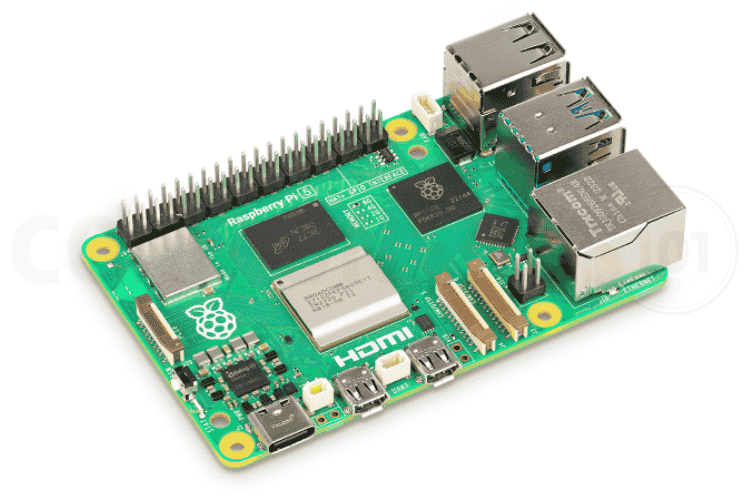
Key Features: Quad-core ARM Cortex-A76 CPU, dedicated Raspberry Pi AI Kit, external third-party AI accelerator support, Wireless Connectivity, Ethernet, HDMI and USB 3.0 interfaces
Use Cases: Edge AI with external accelerators, ML experimentation, educational AI projects
Google Coral Dev Board
The Google Coral Dev Board is engineered to bring high-speed machine learning inference to edge devices, thanks to its Edge TPU coprocessor. This dedicated AI hardware allows the Coral Dev Board to run TensorFlow Lite models at low latency while consuming minimal power, making it ideal for real-time AI applications in constrained environments. It excels in deploying pre-trained AI models for tasks like object detection, speech recognition, and natural language processing. It is built around teh NXP i.MX 8M SoC with quad Cortex A53 cores and one Cortex M4 core, along with a GC7000 Lite integrated GPU. The Edge TPU on the Coral Dev Board supports 4 TOPS (Tera Operations Per Second) performance, which is sufficient to run large-scale neural networks directly on the device without requiring cloud connectivity. This capability is valuable in scenarios where data privacy, low-latency response, or offline operation is critical. The Coral Dev Board integrates seamlessly with Google’s AI ecosystem, supporting frameworks like TensorFlow and AutoML, and comes with connectors for cameras, microphones, and other peripherals, enabling a wide range of AI-powered solutions.
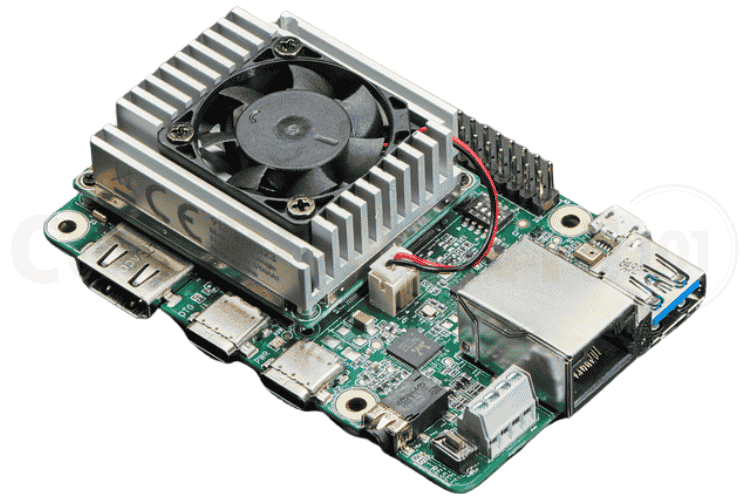
Key Features: Edge TPU coprocessor, GC7000 Lite integrated GPU, 4 TOPS AI performance, MIPI-CSI2 camera interface, Wireless Connectivity, Ethernet, HDMI and USB interfaces
Use Cases: Real-time AI inferencing, smart cameras, AI at the edge, privacy-focused AI solutions
Each of these development boards offers unique strengths for AI and ML tasks, ranging from simple visual recognition projects to complex autonomous systems. The choice of platform depends on the cost, scale, performance requirements, and the specific AI capabilities your project demands.









